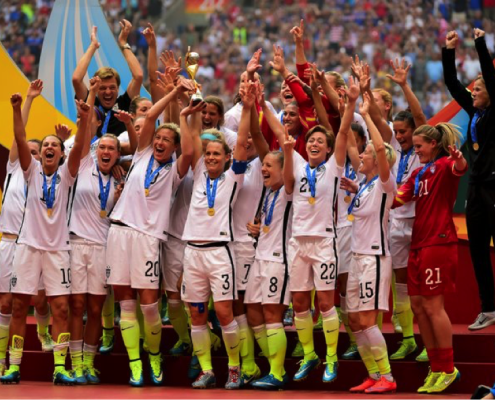We’ve all had them before: those emotional moments, good or bad, brought on by some of our favorite sports moments. You may have been watching the Super Bowl with your family on TV, or been on Twitter obsessively to keep updated on who was winning the NHL Stanley Cup playoffs, or maybe you were privileged to witness history when the U.S. Women’s National soccer team won the Women’s World Cup with a final score of 5-2 against Japan, just last Monday.

Whatever spurred your emotional interest: a personal connection to the sport, the players, the sponsors, or the overall event was somehow cultivated. One can healthily assume that our game – the game of marketing, that is – had something to do with that connectedness. Sports marketing has grown tremendously over the past few years and PWC predicts global sports revenue will grow to $145.3 billion between the years 2010 and 2015.
The opportunity for sporting events’ reach is reflected in the Wall Street Journal’s calling-out of Snapchat’s Women’s World Cup social media shortcoming. The Journal reported on the photo sharing application’s missed opportunity. Unlike it’s done in the past, Snapchat did not garner sponsors (read: advertisers) for its Women’s World Cup “story”, which is a contributory compilation of videos and/or photos from its users, funneled into one channel that creates a visual “story” of what’s happening at that specific event or place. The article critiques the infrastructural capacity of Snapchat, and questions its capabilities’ appeal to advertisers.
And that’s just a missed opportunity. There are clearly advertisers and brands capitalizing on the connection consumers have to their sports. And as media grows more social, more mobile, and more interactive, that connection is not growing any weaker, anytime soon.
Lesson? Brands need to strengthen their marketing game, because ultimately the winners are the ones who not only know the sport, they know how to tap into the emotions behind it.
